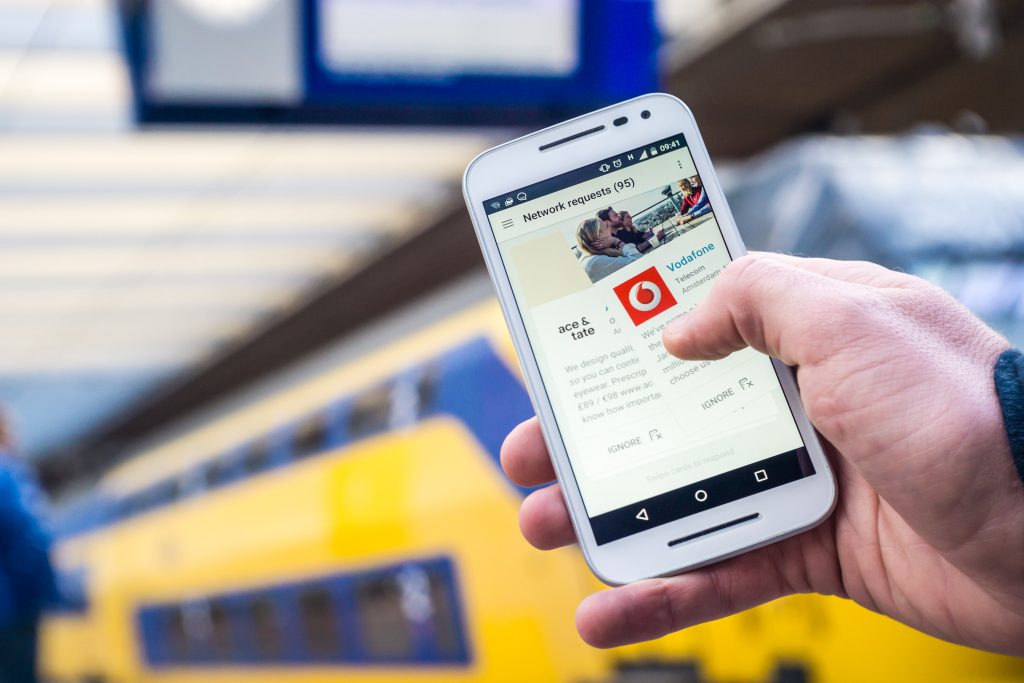Everyone at some point in their life has probably come across pop ups when browsing online. From ‘sign up’ requests to annoying spam adverts that take forever to close, we passively see pop ups every day.
It’s only when you start understanding marketing and developing your own digital marketing strategy though, that you get an insight into their purpose and why so many companies use them. Despite going against nearly all user experience (UX) best practices, pop ups are still one of the most popular methods of getting leads from online traffic.
But is the potential to convert a large amount of traffic worth the website design principles frustration and the potential SEO penalties? Let’s find out as we look at the pros and cons of website pop ups and their impact on SEO.
What are pop ups?
As their name suggests, pop up adverts work by ‘popping up’ on a screen. This normally happens when a web page has just loaded, seconds later a pop-up message will appear and block your view of the newly loaded content. That’s the main idea behind them, but they can also be used to work with different website visitor actions, for example hovering their mouse near the browser close button.
In addition, there are interstitials, and even Google uses the term interchangeably with pop ups to describe both types of messaging, due to their similarities. Whilst a pop up will normally appear when the content of a page has loaded, an interstitial will show up during the page loading, and can restrict access to the content until the user clicks the ad or a ‘continue to site’ button. This also makes the page speed feel slower for the user.
With technicalities put aside, both pop ups and interstitials have the same goal, to put information in front of website visitors in a clear and (nearly) unavoidable way.

The pros of pop ups
When used correctly, pop ups can be a handy digital marketing feature that boosts your website’s lead generation and conversion rates. Of course, the extent to which these benefits apply depends on the website involved, but when they’re well-designed and suitably executed pop ups aren’t a bad thing.
They get the message across
Taking over an entire desktop screen isn’t exactly subtle, but it certainly grabs the attention of the user and ensures the intended message is seen. Even if they do click away from it when they can, users are practically guaranteed to see your pop up, and although such a bold and in-your-face approach can be considered rude and annoying by some, other people will end up clicking through to the next step in your lead generation process.
Also, with so many different messages on your website, a pop up can give you space to focus on one overarching call to action (CTA).
It’s easier to capture data
As well as telling website visitors about a sale or another important feature you want to shout about, pop ups can also be strategically used to collect data. Often this takes the shape of a ‘sign up’ form for mailing lists and other subscription services that are similar.
The likelihood is only a very small number of consumers will actively seek out a sign-up form. So, by putting it directly in front of them, you can improve your chances of adding new leads to your database.
Modern pop ups can look less intrusive
When you think of pop ups, you probably imagine the stereotypically unappealing and virus-like spam of earlier on in the 2000s. In the digital world today with effective, responsive web design, businesses that want to use pop ups will perform better if they avoid the mistakes of their pop-up predecessors. Several variations now are designed to be less invasive on the user experience.
Modern pop ups can showcase a nice and visually appealing design whilst functionally helping to direct website visitors to the content they’re looking for. A clear, bold message, that’s eye catching and guides users to their end goal will almost always go down well and is a key example as to why pop ups can be useful in digital marketing.

The cons of pop ups
As we’ve covered above, pop ups are really only beneficial if they’re designed and implemented properly. Like with any badly used marketing tactic, pop ups can damage the reputation of your website and even negatively impact your SEO efforts.
They have a bad reputation
Pop ups are known for being incredibly annoying, particularly for full-screen invasions, and they are often thought of as spam. Even though this isn’t as much of a problem nowadays, it wasn’t long ago that users regularly ended up with viruses from pop ups. Therefore, it’s not surprising that people feel very sceptical and negatively towards them. This could even lead to your brand reputation becoming damaged.
They’re intrusive and block content
There is a large number of people that have a strong dislike of all pop ups. This is because they find pop ups invasive when they’re trying to browse, and the ads can be distracting. Also, because they are normally the last thing to load on a page, users have already started reading the content and then it gets blocked from view. It could only take this blocking to make the visitor click off your website and go somewhere else.
A lot of them will be stopped by ad blockers
In response to unwanted pop-up ads and other types of ‘annoying’ marketing, many online users are now protecting themselves from these marketing tactics with an ad blocker. Although not all pop ups will be blocked by these browser plugins, it is worth thinking about whether you should create pop ups that could just end up blocked from view by a piece of code.
Bounce rate and losing potential leads
As mentioned above, quite often the appearance of a pop up that obscures a user’s view of the content they were reading will encourage them to leave your website. So, as well as increasing the bounce rate on your website, you will be losing out on potential leads by gate crashing user sessions.
Even if you pop up generates some leads you could lose out on more leads than you get. Forcing users to complete an action is fine if they end up converting but if they don’t it only exaggerates their frustration at the interruption.
How do pop ups affect SEO?
Pop-up windows can have a very harmful effect, especially when it comes to mobile SEO. This is clarified by a specific check within Google’s search algorithm for pop ups and interstitials on mobile pages. If they’re detected and determined to be obtrusive, then it is likely that your pages will rank lower. However, the full impact on your SEO of having pop ups and interstitials can be considerably larger than the direct search penalty.
If preventing access to your content is leading to higher bounce rates, less time being spent on your website, fewer pages visited, and stopping others from linking to your content, the wider SEO effects will be huge. High-quality and relevant links remain one of the most important ranking factors in Google’s search algorithm. By using pop ups, you’re reducing your chances of achieving these by lowering the percentage of visitors who engage with your content, never mind sharing it with others.

The 2017 update
Back in January 2017, Google stated that it was introducing an update that would penalise websites with pop ups and interstitials on mobile. This is only relevant to mobile SERPs (search engine results pages). It is usually advisable not to show pop ups to mobile traffic anyway because of the amount of UX problems they cause.
With this in mind, you might want to reconsider your strategy if you’re currently using them on mobile. There were some exceptions to the 2017 Google update including:
Pop ups that inform users about Cookies
Asking users to confirm their age or any other legal requirements
Login panels or other UI elements
Banners that only cover a small part of the screen, as long as users can easily dismiss them
Ultimately, Google didn’t want to see any pop ups that made content less accessible to users on mobile devices. Examples include prompts to download a mobile app, email sign up forms, and other imposing pop ups, which will now face a penalty.
Final thoughts
Like with many things in the digital marketing world, pop ups will only work if they’re used in the correct way. Displaying a simple and informative pop-up message could encourage users to your business and allow you to boost your conversion rate.
Whereas when done badly, pop ups will likely cost you leads, increase your bounce rate, and make you appear less trustworthy to many users. Only you can decide if the leads you’re generating with pop ups/interstitials are worth the losses you will encounter in terms of searching ranking, UX, etc.
Whether you’re thinking about utilising pop ups or not, our friendly team can help your business perform better online. We can create a custom website design that reflects your brand identity and ensures a smooth journey to turn visitors into customers.
Not sure if you need a new website? Request a free audit from us to see how your current website is performing and how our web development and digital marketing services can grow your business.

